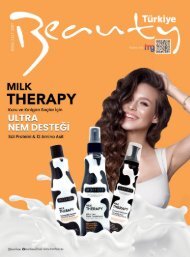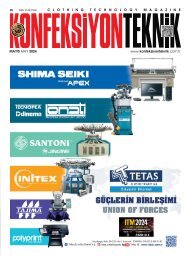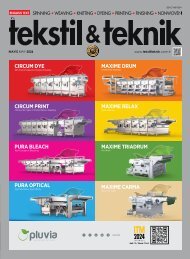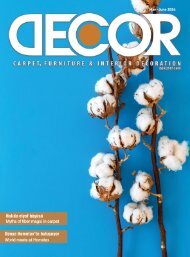SleepTech Magazine / May - June 2017
Create successful ePaper yourself
Turn your PDF publications into a flip-book with our unique Google optimized e-Paper software.
152<br />
weight polyols within the material.<br />
Polyether polyols account for<br />
about 90% of the polymeric polyols<br />
used industrially; the balance<br />
is polyester polyols.<br />
As is the case for all foam manufacturers<br />
at almost all over the<br />
world Turkish foam manufacturers<br />
have also been suffering some<br />
supply problems of this main input<br />
of their manufacturing process.<br />
Price hikes are also a big problem<br />
for the industry. Depending on<br />
this material for foam production<br />
the industry is almost in a monopoly<br />
of a main supplier. When it<br />
suffers from any cause the entire<br />
industry suffers because the producer<br />
naturally reflects the loss on<br />
prices, delivery and other factors.<br />
Another class of polymeric polyols<br />
is the polyesters. Polyesters are<br />
formed by condensation or stepgrowth<br />
polymerization of diols<br />
and dicarboxylic acids (or their<br />
derivatives), for example diethylene<br />
glycol reacting with phthalic<br />
acid.[5] Alternatively, the hydroxyl<br />
group and the carboxylic acid (or<br />
their derivatives) may be within<br />
the same molecule, as in the case<br />
of caprolactone. The example<br />
below is an idealized structure<br />
that could be obtained by reacting<br />
pentaerythritol (a tetrol) with<br />
gamma-butyrolactone.

















